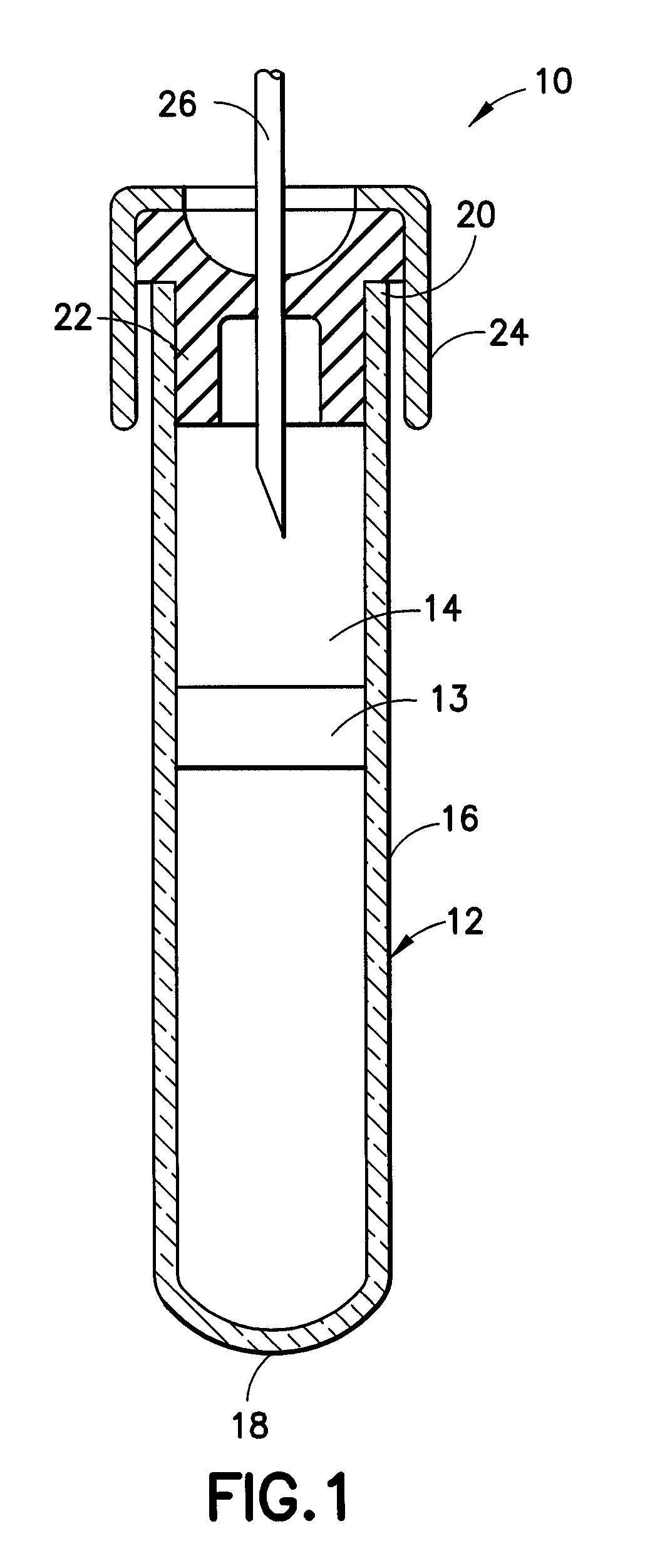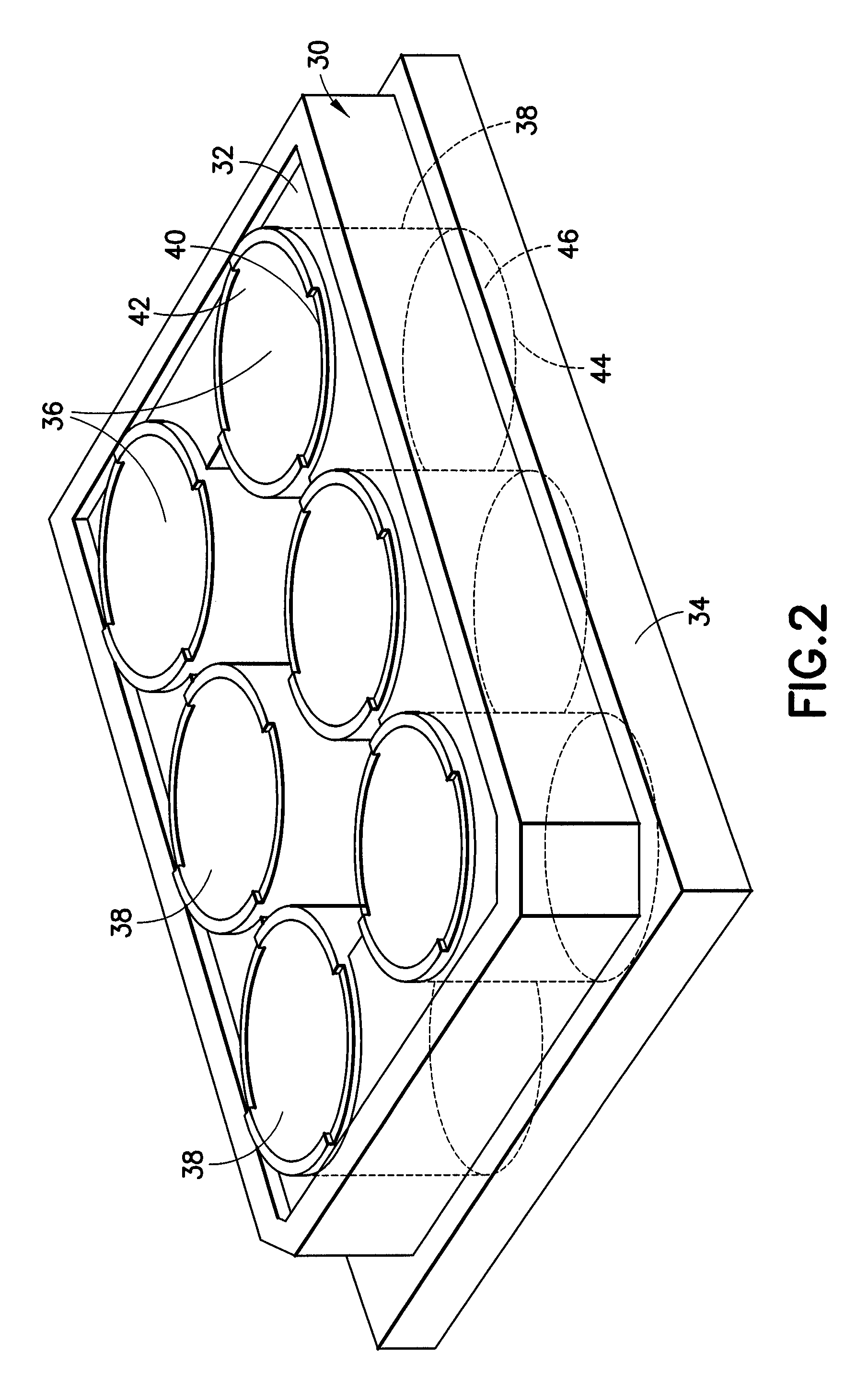Protease inhibitor sample collection system
a sample collection and protease inhibitor technology, applied in the field of protease inhibitor sample collection system, can solve the problems of degrading or fragmenting proteins, affecting and elapsed time between obtaining samples, etc., and achieves the effect of increasing the relevance of protein research and analysis
- Summary
- Abstract
- Description
- Claims
- Application Information
AI Technical Summary
Benefits of technology
Problems solved by technology
Method used
Image
Examples
example 1
Plastic Tubes with Mechanical Separator
[0097]Fifteen hundred (1,500) plastic tubes were spray coated with a lithium heparin solution and dried. A stabilizing agent was prepared by dissolving SIGMA® protease inhibitor cocktail in deionized water using about 22 ml of deionized water per vial of protease inhibitor. Into each tube was placed approximately 300 μl of the stabilizing agent solution. A mechanical separator was assembled into the closures (HEMOGUARD® closures lubricated with silicone) of each tube and then the closure / separator assemblies were placed on the tubes. Next, the tubes were lyophilized and evacuated. The tubes were then placed into barrier packages, about five (5) tubes per pouch, with desiccant. The pouches were heat sealed, and the product was sterilized.
example 2
Glass Tubes with Mechanical Separator
[0098]The procedure of Example 1 was followed, this time using glass tubes.
example 3
Plastic Tubes with Mechanical Separator
[0099]The procedure of Example 1 is again followed, except that the stabilizing agent solution also includes about 0.5 to about 20% trehalose.
[0100]A suitable example of a formulation for a protease inhibitor cocktail is as follows: about 800 μg / ml benzamidine HCL, about 500 μg / ml phenanthroline, about 500 μg / ml aprotinin, about 500 μg / ml leupeptin, about 500 μg / ml pepstatin A and about 50 μg / ml PMSF. The cocktail is in the form of a lyophilized powder. Before use, about 1 ml of pure ethanol is added to the lyophilized powder to obtain a 50× protease inhibitor cocktail.
PUM
 Login to View More
Login to View More Abstract
Description
Claims
Application Information
 Login to View More
Login to View More - R&D
- Intellectual Property
- Life Sciences
- Materials
- Tech Scout
- Unparalleled Data Quality
- Higher Quality Content
- 60% Fewer Hallucinations
Browse by: Latest US Patents, China's latest patents, Technical Efficacy Thesaurus, Application Domain, Technology Topic, Popular Technical Reports.
© 2025 PatSnap. All rights reserved.Legal|Privacy policy|Modern Slavery Act Transparency Statement|Sitemap|About US| Contact US: help@patsnap.com



